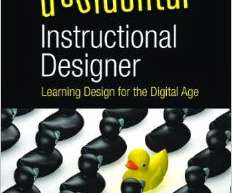Create your own Learning Theory
Raptivity
FEBRUARY 6, 2013
Wikipedia defines Learning Theory as “Learning theories are conceptual frameworks that describe how information is absorbed, processed, and retained during learning.

Raptivity
FEBRUARY 6, 2013
Wikipedia defines Learning Theory as “Learning theories are conceptual frameworks that describe how information is absorbed, processed, and retained during learning.

CDSM
AUGUST 27, 2015
What is Blooms 21? Conceived between 1949 and 1953 by a committee of educators, the original Bloom’s taxonomy identified a number of cognitive levels at which humans can function. Consequently, Blooms becomes a ‘step pyramid’ that one must arduously try to climb with your learners. How CDSM’s Users Learn Through Creating.
This site is protected by reCAPTCHA and the Google Privacy Policy and Terms of Service apply.

Academy of Mine
NOVEMBER 14, 2020
The problem with this style of learning is that it sometimes results in learners memorizing answers solely to complete a course. That’s where Cognitive Learning Theory (CLT) comes into play – by focusing on individuals’ backgrounds and experiences as opposed to just grading for correctness. What is Cognitive Learning Theory?

Learning Visions
APRIL 25, 2022
The artwork he's since created is AMAZING. All of us in the keynote session made art together on our phones and Phil's going to put them all together to create a larger work of art. Can't wait to see what we created! Create a trend or bend one that's already existed. Creates highly digestible content. Collect data.

Academy of Mine
NOVEMBER 15, 2020
Cognitive Learning Theory is a useful theory for looking at education in a modern way, which focuses not just on the student’s ability to repeat the information they have been taught, but instead asks why and how a student was able to learn, and what their innate mental processes and previous life experiences had to do with that learning.

Hurix Digital
JUNE 26, 2023
Clear and Precise Learning Objectives Effective Content Delivery Communication and Collaboration Clear and Concise Instructions Regular Assessment and Feedback What are some Tips for Creating Remote Instructional Design? Instructional design is the process of creating and organizing learning material and activities.

CLO Magazine
APRIL 16, 2021
Based on my research on learning theory, instructional design, design thinking, employee engagement, organizational health and neuroscience, I created the “Wicked Learning Experience Design.”. I embraced the flipped learning model and moved all the lectures to the online LMS and split the class into three shifts.
Let's personalize your content